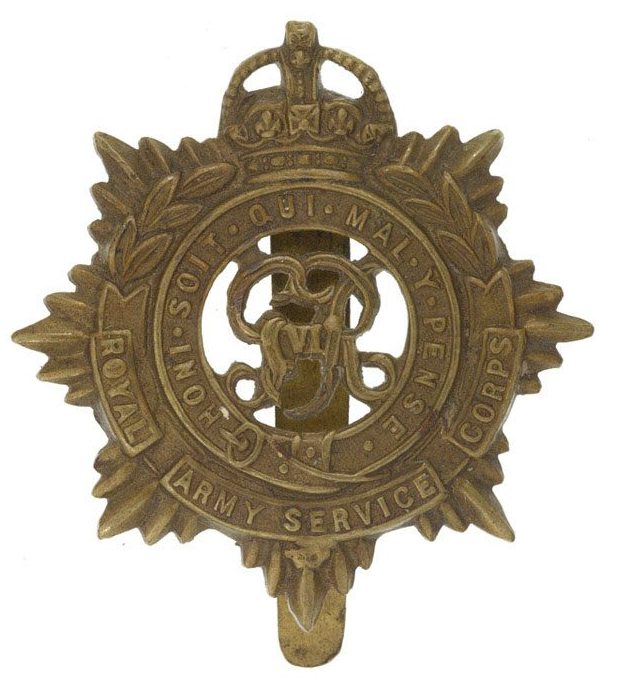Personal Details
Born: 1 January 1884 in Whitchurch, Shropshire.
Family: He was the youngest of eight children born to James Norton, a blacking manufacturer and his wife Elizabeth. He married Beatrice Hare on 23 March 1916 at the Unitarian Church, Mansfield, Nottinghamshire. No children can be found for the marriage.
Residence: In 1891 his family were living at Tilstock Lane, Tilstock, Shropshire. By 1901 his address was 58 High Street, Whitchurch, the home of his sister Alice. In 1911 he was boarding at North Street, Sutton in Ashfield, Nottinghamshire. At the time of his enlistment in 1915 he stated his address was The Shrubbery, New Street, Highgate, Whitchurch. This was the home of another sister, Elizabeth, who was married to Charles Prendergast. However at the time of his demobilisation in 1919 his address had changed again to 15 Kempson Road, Fulham SW6. From at least 1934 until 1939 he and his wife were living at 5 Victoria Road, Oswestry, Shropshire. At the time of his death in 1967 his home was 16 Thorn Avenue, Mansfield, Nottinghamshire.
Employment: In 1901 he was a clerk working for the railway, but by 1911 he stated that his occupation was a slipper manufacturer. This was also his occupation at the time of his marriage in 1916. In 1939 he was a clerk working for the Inland Revenue.
Died: 2 June 1967 in Mansfield, aged 83.
Military Details
Regiment: Royal Army Service Corps
Rank: Private
Service Number: M2/054770
Date of Enlistment: 23 March 1915
Date of Discharge: 1 August 1919
Reason for Discharge: Demobilisation
Frederick was awarded the Campaign Medals (1915 Star, British War medal and Victory medal)

The 1914 Star (also known as 'Pip') was authorised under Special Army Order no. 350 in November 1917 and by an Admiralty Fleet Order in 1918, for award to officers and men of the British and Indian Expeditionary Forces who served in France or Belgium between 5 August and midnight of 22–23 November 1914. The former date is the day after Britain's declaration of war against the Central Powers, and the closing date marks the end of the First Battle of Ypres.
The 1914–15 Star (also known as 'Pip') was instituted in December 1918 and was awarded to officers and men of British and Imperial forces who served against the Central European Powers in any theatre of the Great War between 5 August 1914 and 31 December 1915. The period of eligibility was prior to the introduction of the Military Service Act 1916, which instituted conscription in Britain.
The British War Medal (also known as 'Squeak') was a silver or bronze medal awarded to officers and men of the British and Imperial Forces who either entered a theatre of war or entered service overseas between 5th August 1914 and 11th November 1918 inclusive. This was later extended to services in Russia, Siberia and some other areas in 1919 and 1920. Approximately 6.5 million British War Medals were issued. Approximately 6.4 million of these were the silver versions of this medal. Around 110,000 of a bronze version were issued mainly to Chinese, Maltese and Indian Labour Corps. The front (obv or obverse) of the medal depicts the head of George V. The recipient's service number, rank, name and unit was impressed on the rim.
The Allied Victory Medal (also known as 'Wilfred') was issued by each of the allies. It was decided that each of the allies should each issue their own bronze victory medal with a similar design, similar equivalent wording and identical ribbon. The British medal was designed by W. McMillan. The front depicts a winged classical figure representing victory. Approximately 5.7 million victory medals were issued. Interestingly, eligibility for this medal was more restrictive and not everyone who received the British War Medal ('Squeak') also received the Victory Medal ('Wilfred'). However, in general, all recipients of 'Wilfred' also received 'Squeak' and all recipients of The 1914 Star or The 1914/1915 Star (also known as 'Pip') also received both 'Squeak' and 'Wilfred'. The recipient's service number, rank, name and unit was impressed on the rim.

